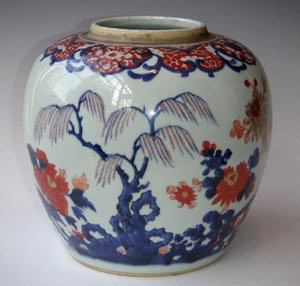Human Flower Project
Thursday, April 19, 2007
Girl Trees of Beijing
With spring “snows” of tree catkins, is China once more biased against females?

A police officer stands in a shower of tree catkins
outside a foreign embassy in Beijing, April 18, 2007
Photo: Greg Baker, for AP
Greg Baker of the Associated Press snapped some fine pictures of April snow flurries in Beijing – not precipitation, actually, but pollen from the city’s tens of thousands of willow and poplar trees.
Uniformed guards look stoical as flecks of white fall outside an embassy. A man on the sidewalk winces, and our sinuses ache in sympathy. AP’s cutline says: “Blossoms of female poplar and willow trees invade the city each spring, causing discomfort to people with allergies and even disrupting traffic due to reduced visibility. After issuing regulations in 2001 allowing only male poplars and willows to be planted, city authorities now plan to inject many of the remaining female trees with growth inhibitors to stop them reproducing and producing the blossoms.”
Writer Ron Fox also makes reference to the anti-female tree program. “I believe the culprit is a variety of cottonwood poplar…. Catkins are everywhere. They rain on you if there is a breeze. The female tree is responsible, and there is a program to replace 200,000 female trees with males over the next few years.”
Wait-a-hold-it! From what we’ve read it’s the male not the female trees that cause pollen problems. This very interesting article by Wendy Priesnitz, reporting on Thomas Ogren’s work, proposes that allergies have become worse for people in many parts of the world because of landscaping trends. “A half century ago, an estimated 50 percent of the trees in our cities and towns were female. Since that time there has been a shift to mostly male, pollen producing trees.” Male trees have been preferred, she writes, because people considered them “litter free,” no seedpods or squishy fruits to rake away.
She quotes Ogren, a nurseryman and ag scientist: “Because no one bothered to consider the effect of the pollen from these male trees, we now have many elementary schools, ringed with male shade trees, and full of asthmatic children.”
So why would Beijing authorities be targeting female poplars and willows to reduce the “snows” of spring? Weirdly, the effort echoes China’s larger anti-female bias which, since the nation’s “one child per family” policy was instated in 1978, has led to a dramatic gender imbalance. At the 2000 census, there were 117 boys for every 100 girls in China (104 boys to 100 girls is closer to the world average). Some demographers are forecasting that in China a “bachelor nation” is around the corner.
We hope all you tree scholars will disabuse us of this suspicion. And please explain. We’re pretty much at square one about catkins (with tools like this guide to sexing aspen poplars).
There clearly has been a concerted tree planting program in Beijing established about the same time as the one-child policy. Peking willow (Salix matsudana) is plentiful in the city, and many thousands of weeping willows (Salix babylonica) have been planted, too, since the early 1980s.
 Imari ginger jar, 18th C.
Imari ginger jar, 18th C.
with willow tree and flowering prunus
Photo: antikwest
Classical Chinese poetry confirms, though, that the sneezy snows of spring are nothing new. They date back at least 1000 years. Su Tung P’o looked and wondered:
The pear blossoms are pure
White against the blue green willows.
Willow cotton blows in the wind.
The city is full of flying pear flowers.
Petals fallen on the balcony look like snow.
How many spring festivals are we born to see?
In poetry, tree pollen dusts mirrors and coats wine in the cup. The world is awakening. Get with it or get out of the way!
This from an anonymous 4th Century writer, translated by Kenneth Rexroth:
We break off a branch of poplar catkins.
A hundred birds sing in the tree.
Lying beneath it in the garden,
We talk to each other,
tongues in each other’s mouths.
Culture & Society • Gardening & Landscape • Medicine • Permalink




